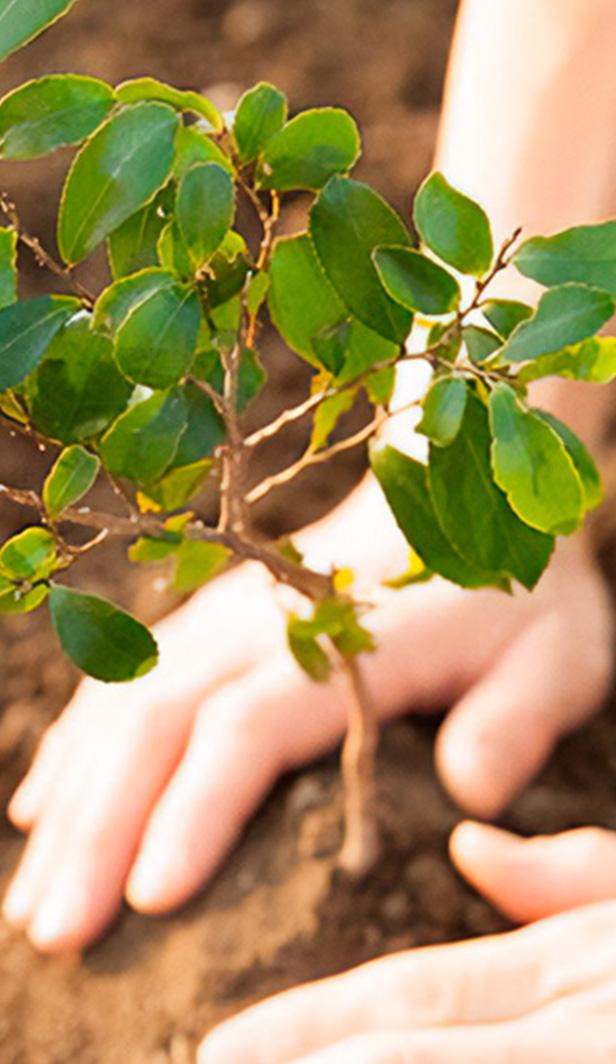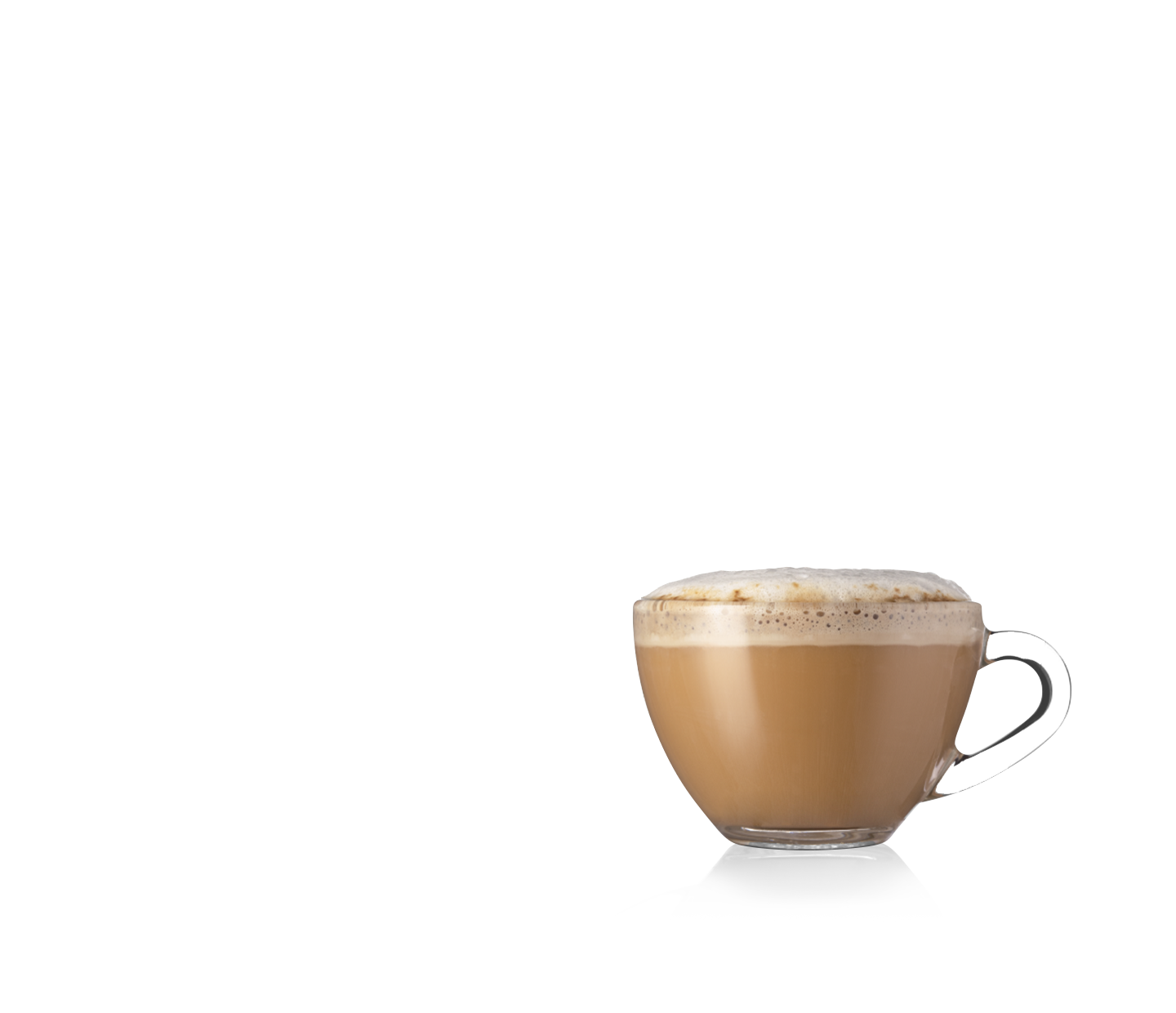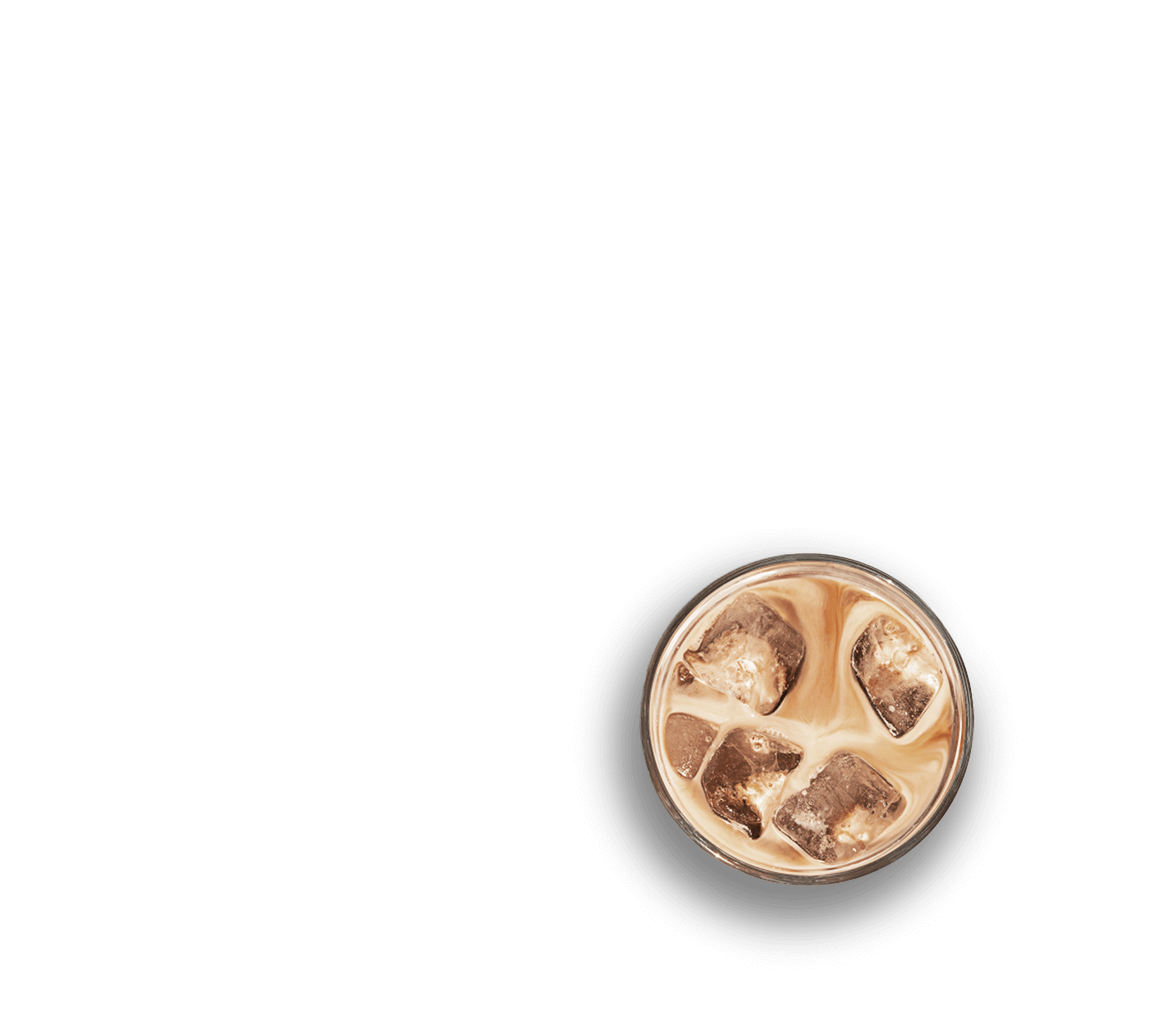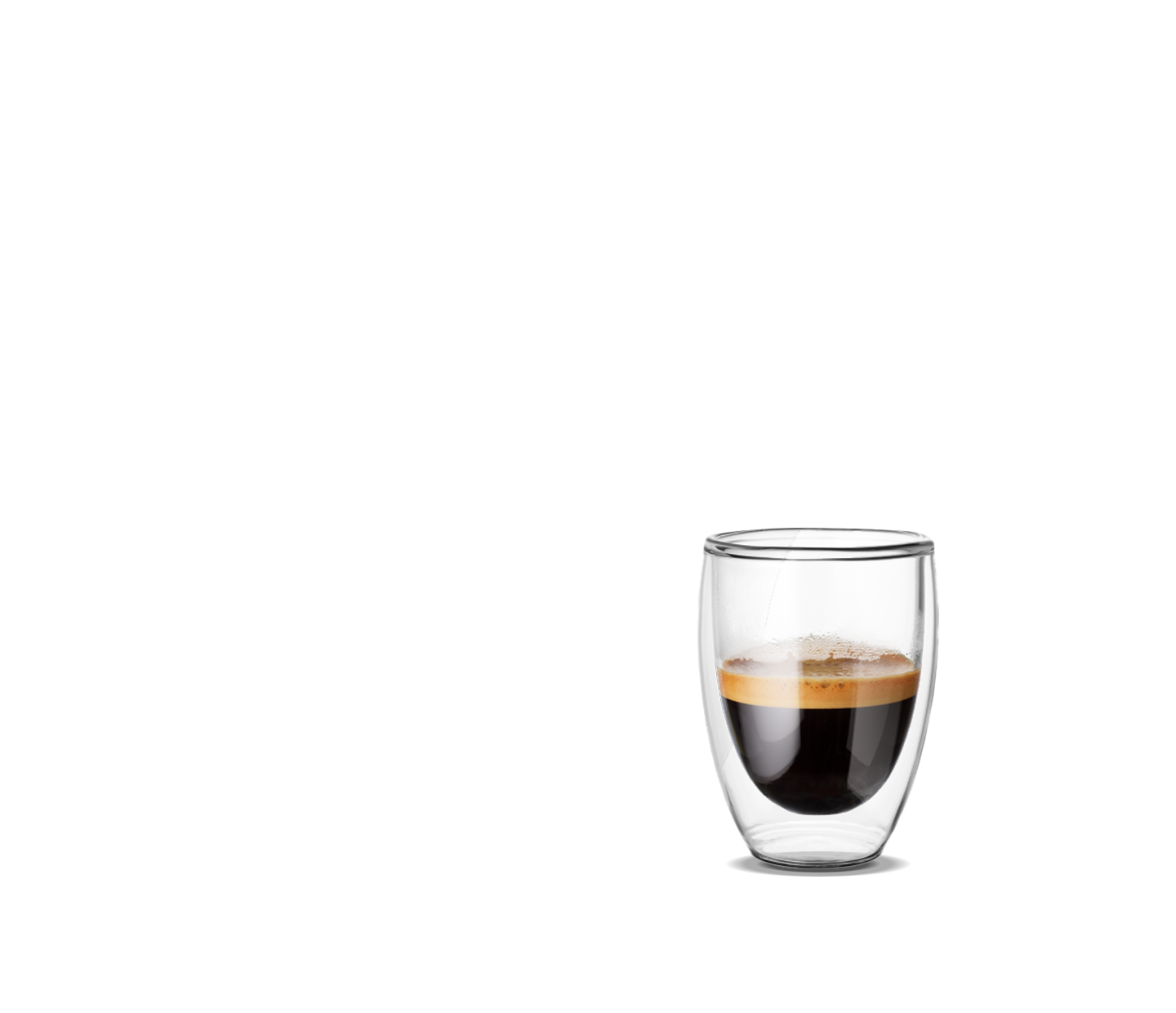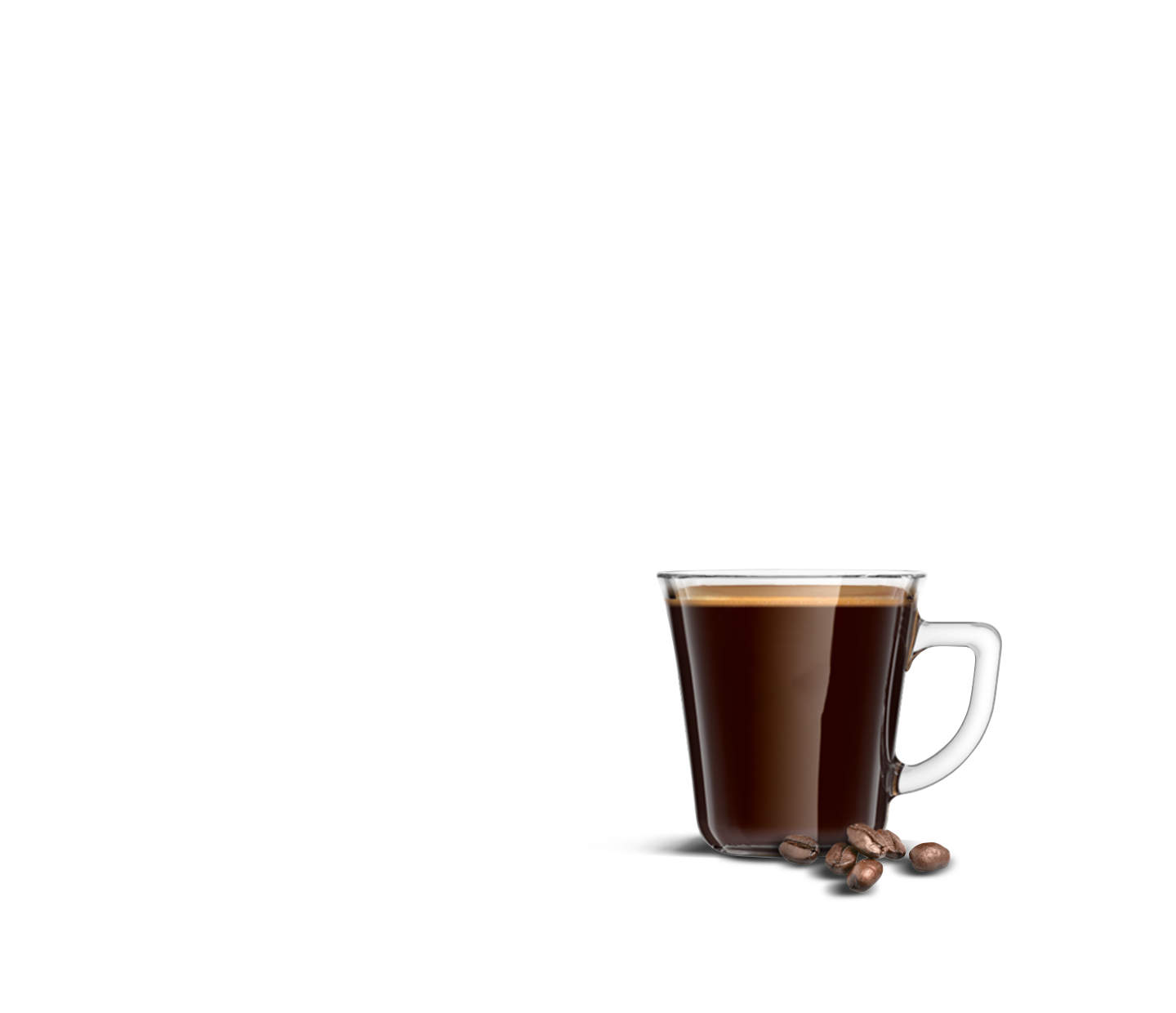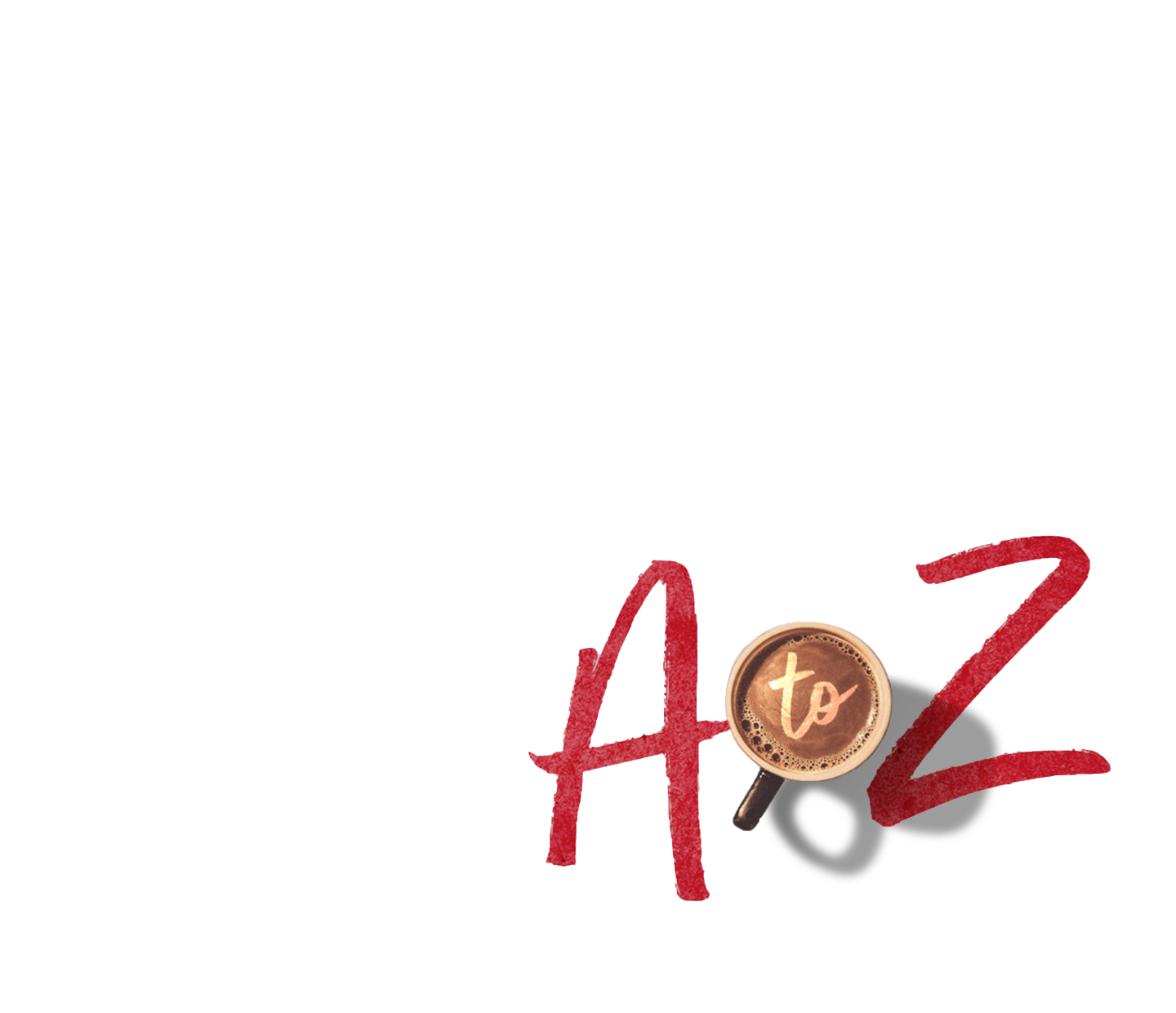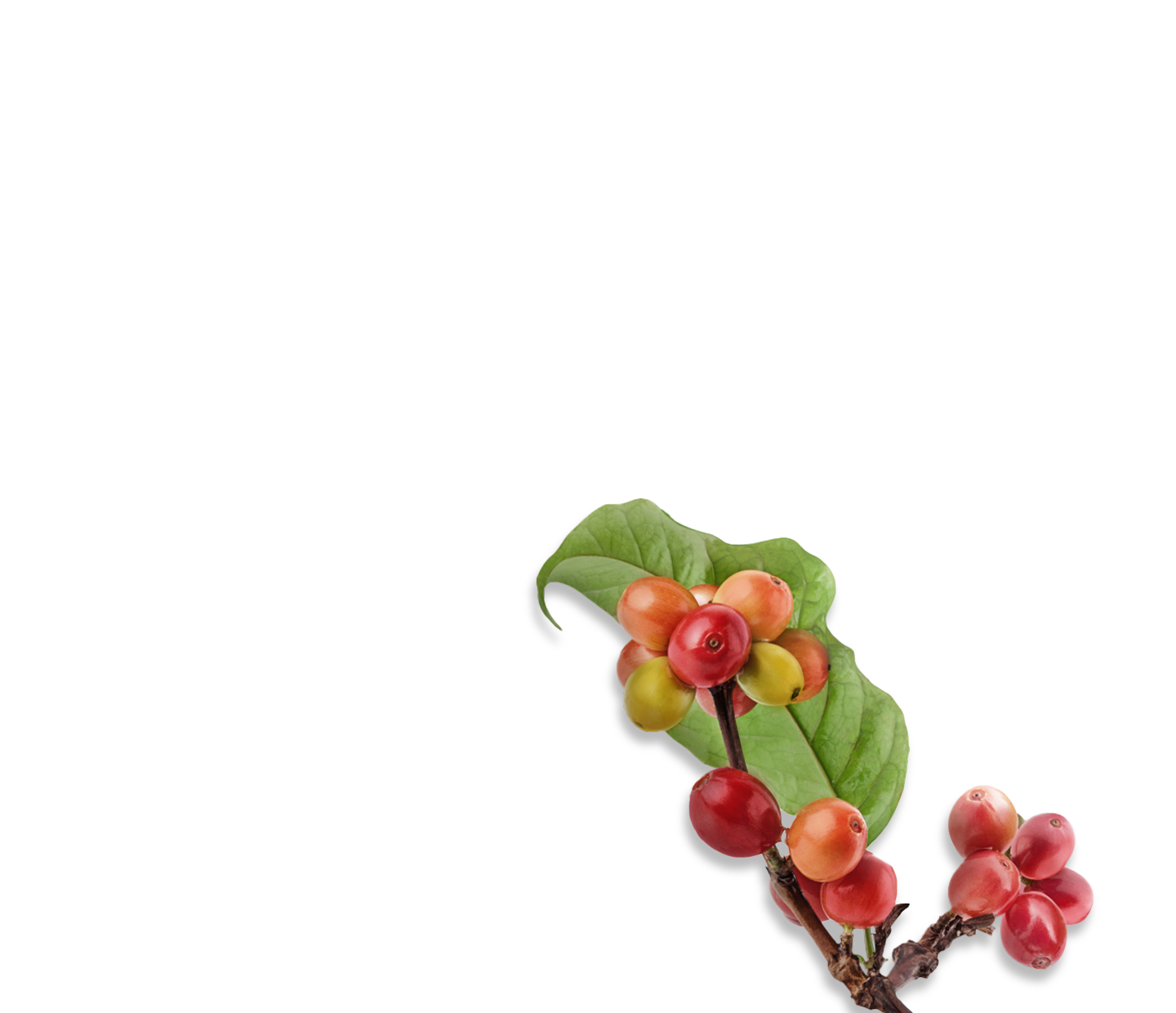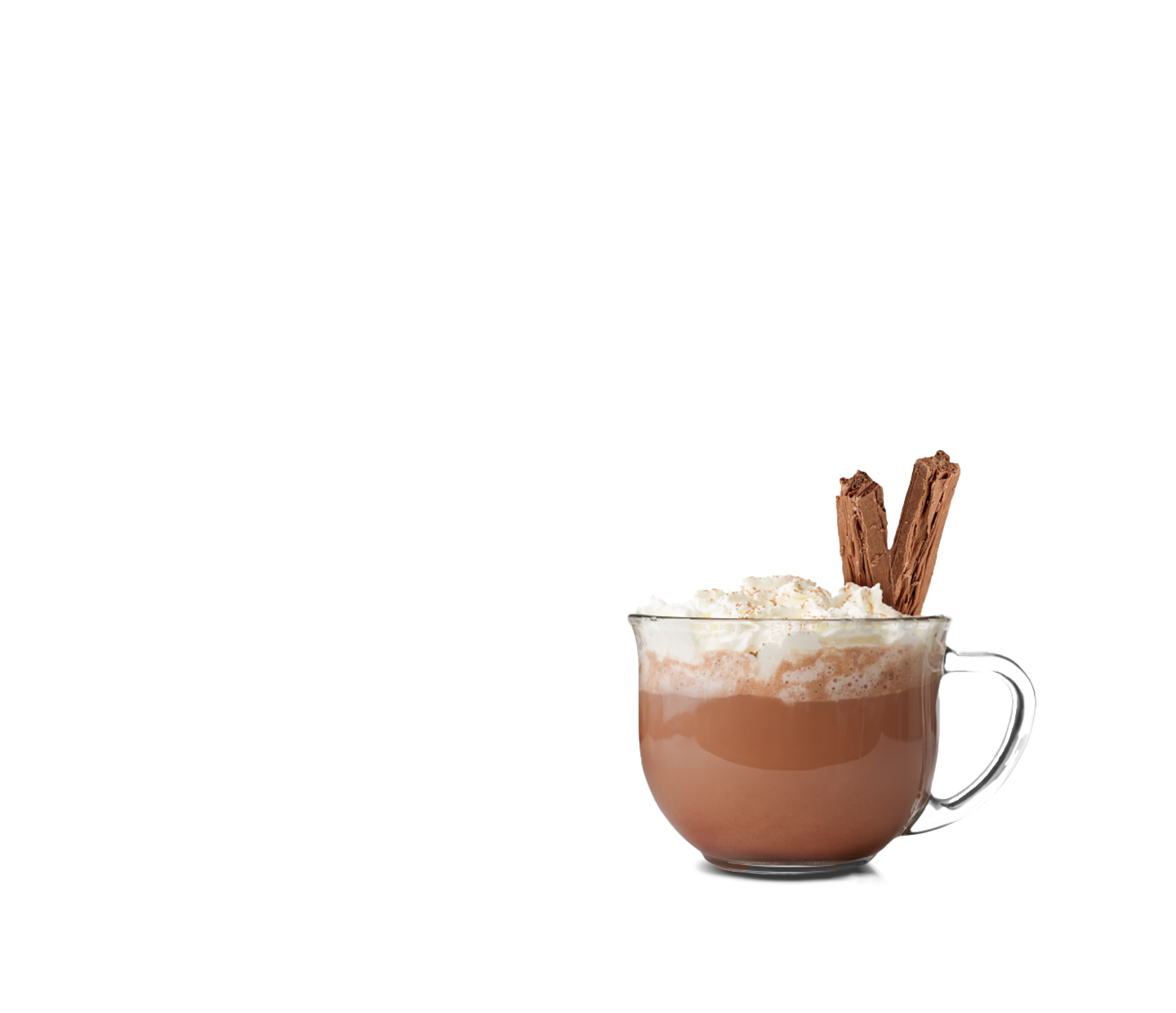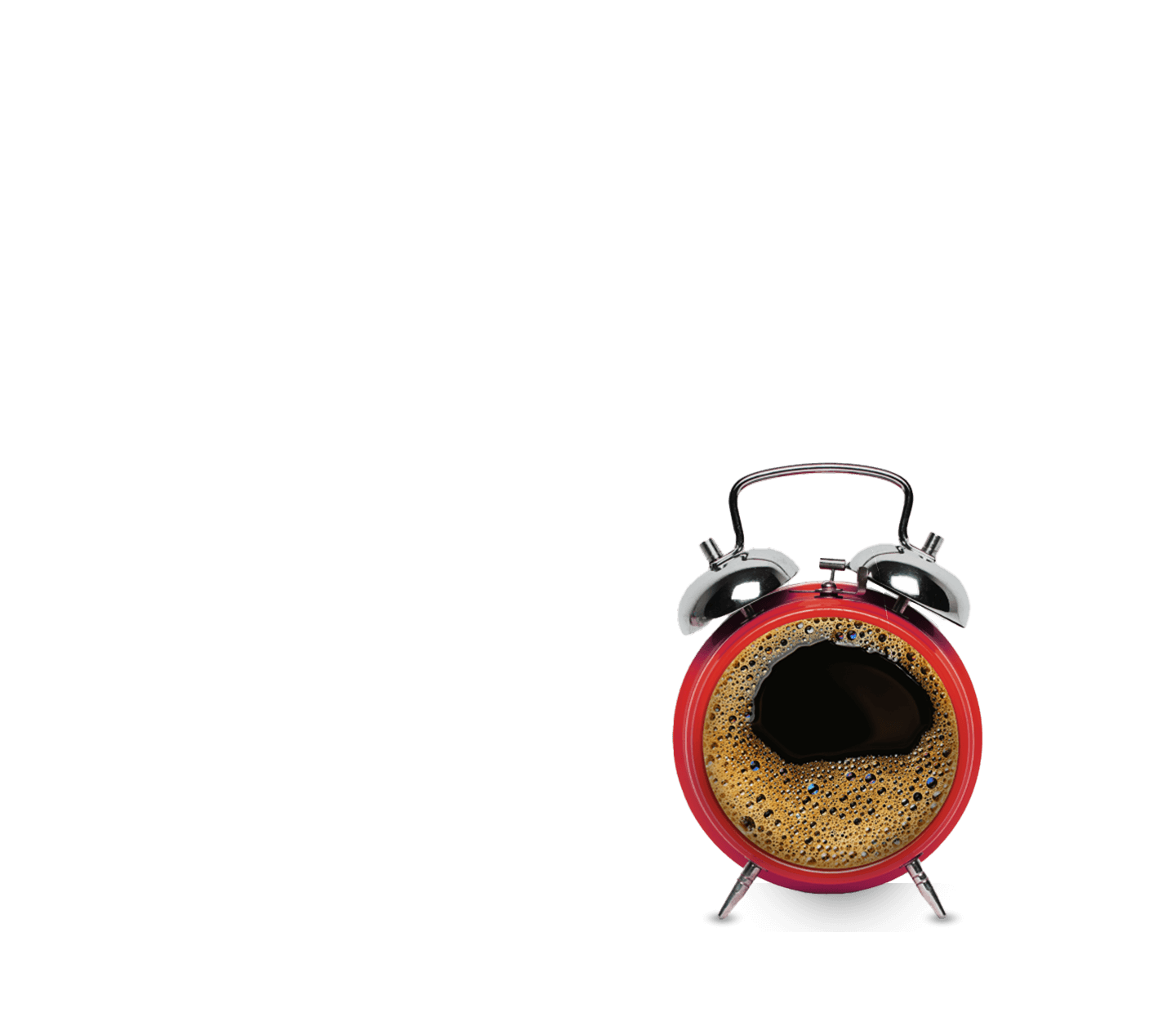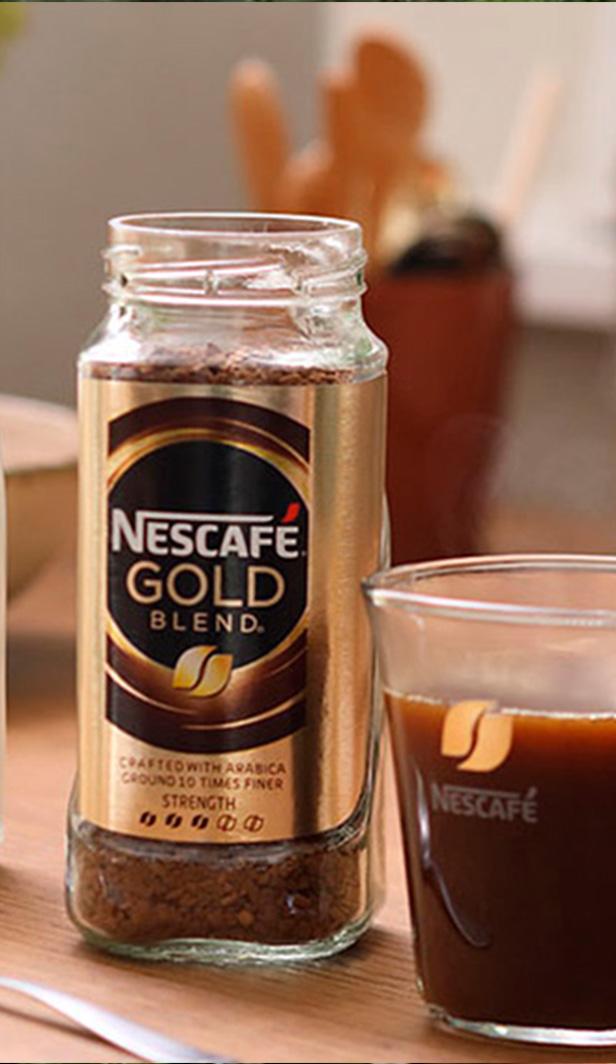What is a frappé?
Make your day a little more indulgent

Frappé’s around the world
When ordering a Frappé, what you get really depends on where you are in the world. In Greece, you can expect a couple of tablespoons of instant coffee, sugar, water and milk (if you want them), which will then be put into a cocktail shaker and shaken to get the frothy layer on top. In Bulgaria, don’t be surprised if it’s served with soda instead of water. Denmark substitutes the water for milk and Serbia serves the frappé with milk or ice cream and freshly whipped cream on top. However, one of the really different frappé variations is in Boston, where it’s actually a milkshake made with ice-cream and is simply pronounced ‘frap’. So, if you’re a frappé lover, enjoy the experience of discovering every unique variation to be found!

The Frappé we know and love is pronounced ‘frap-pay’ and when loosely translated from French, it literally means ‘iced’.
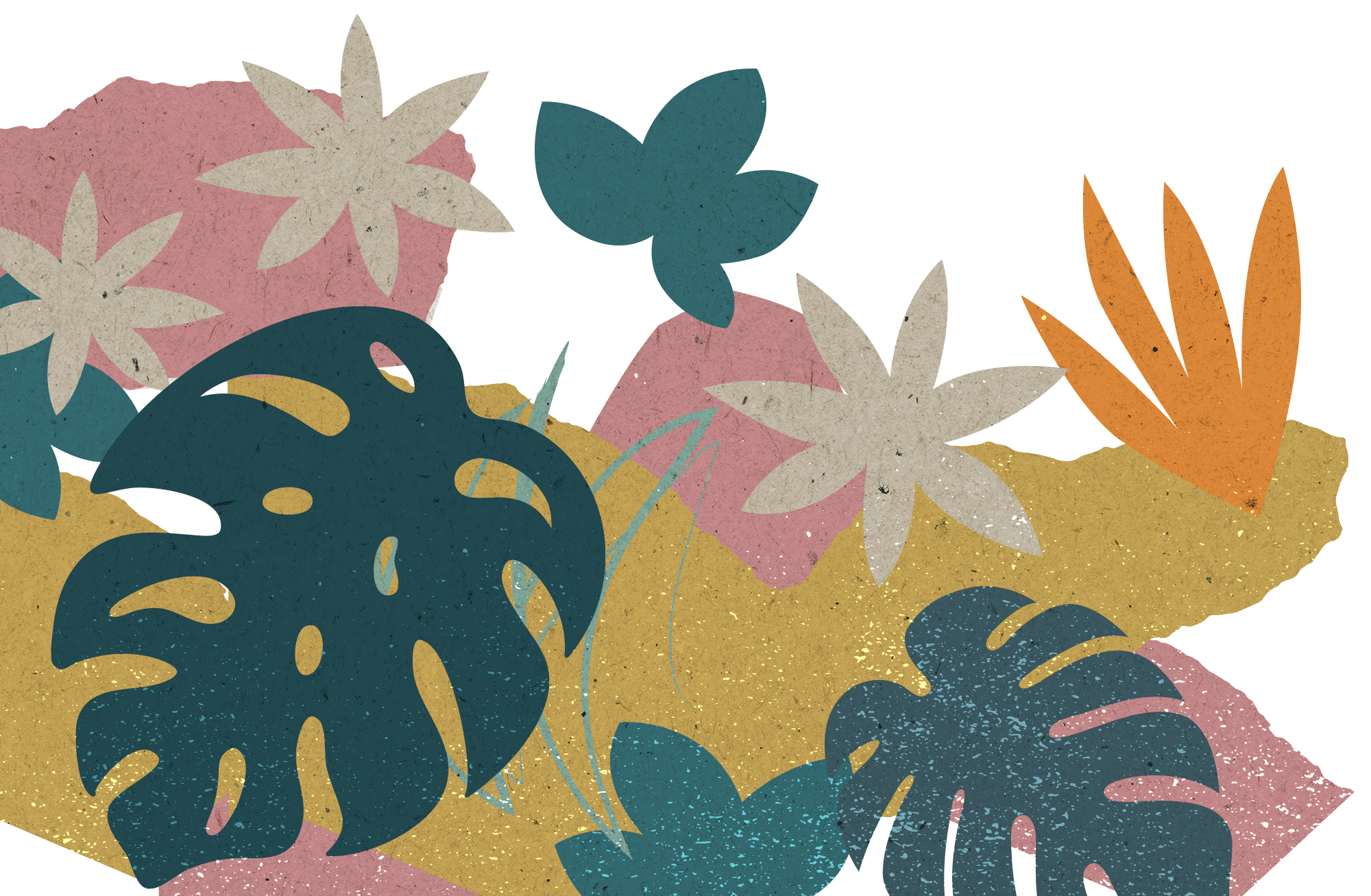
Frappé origins
The ‘café frappé’ started appearing in the mid-19th century with some drinks possessing a slushy-like texture and others appearing similar to an iced coffee. However, the frappé really kicked off in 1957 at the Thessaloniki International Fair in Greece. The story goes that a representative from Nestlé was demonstrating an instant chocolate drink for children with a chocolate base that was added to milk then shaken in a shaker. When on their break, an employee of the Nestlé representative realised there was no hot water to make their coffee, so instead they mixed the instant coffee granules with cold water and ice cubes, mixed it in the shaker and voila, a modern frappé was born! This version of the frappé is still incredibly popular in Greece today and you can find it in most coffee shops across the country.

What’s the difference between a frappé and a Frappuccino?

Today’s community favourites
Discover some of the most enjoyed articles from across the site

What is a flat white?
Treat yourself
A flat white is a blend of microfoamed milk poured over a single or double shot of espresso. This microfoam is steamed milk infused with air which creates a smooth, velvety texture and creamy taste. Precise pouring and steaming of the microfoam is essential when making a flat white.

Origins of the flat white
The origins of the flat white coffee is a source of hot debate! Both Australia and New Zealand claim to have invented the flat white in the 1980s. The answer is still unclear and it’s likely that the flat white evolved in both countries.

Where is the flat white from? Its origin is a source of hot debate! Both Australia and New Zealand claim to have invented the drink in the 1980s, but it probably evolved in both countries.

What makes it a flat white?
There are many things that go into creating the flat white coffee. What makes a flat white depends very much on where you get your coffee from and the individual barista, who serve their milks in different ways; thick, frothy or foamy, piping hot or lukewarm. Some stay true to a more traditional approach, maintaining a consistent ratio of milk to coffee.

Flat white vs latte – what’s the difference?
While a flat white coffee and a latte are both espresso-based drinks, they are in fact quite different. Most noticeable, is the size. The ideal serving size for a flat white is a 160-165ml tulip cup—much smaller than the glass size typically used for lattes and cappuccinos. This has an impact on the coffee to milk ratio, which naturally affects the taste. As the flat white is a more compact drink, the ratio of coffee to milk is much higher than in a latte. The espresso in a flat white coffee tastes stronger than in a latte, even though the same amount is used. Lattes simply dilute the espresso more.
When deciding between a flat white or latte, which do you prefer? If the latte has won your heart, try the NESCAFÉ® GOLD Latte.

Today’s community favourites
Discover some of the most enjoyed articles from across the site

What is an iced coffee?
Make your day a little cooler
An iced coffee is basically a cold version of your favourite coffee. But unike a regular coffee, ice is added to the hot espresso and milk to make it even more refreshing!

Who said cold can't mix it with hot?
Just like a regular coffee, the iced version can include frothy or steamed milk, if that's how you'd like to make your version. But because of the ice you may find less milk is added to an iced coffee. If for some reason it’s too milky, another shot of espresso can be added.

Today’s community favourites
Discover some of the most enjoyed articles from across the site

What is an espresso?
Awaken your senses
Espresso is a delicious concentrated form of coffee, served in shots. It’s often the coffee base of many other beverages, such as cappuccino, latte, americano and macchiato. An espresso is intense and bold, but nonetheless delicious, and usually served in small demitasse-style cups for this reason.

Caffeine content in espresso
Espresso has the reputation of having a high caffeine content. However, this depends on how much is drunk. Typically, espresso contains 29 to 100 milligrams of caffeine in a single shot. A double shot will contain between 58 to 185 mg of caffeine.

Espresso is known to contain a high caffeine content, but this depends on how much is drunk. It typically contains 29 to 100 mg of caffeine in a shot. A double shot contains 58 to 185 mg of caffeine.

Espresso origins
As with many famous coffee recipes, the espresso was invented in Italy, around 100 years ago, and is credited to a man by the name of Luigi Bezzera, from Milan. He was the first to use a steam-pressure method of brewing coffee, which produced a strong cup of coffee faster than ever before. In fact, the name ‘caffé espresso’ translates to ‘pressed out coffee’, referring to the water being pushed through the finely ground coffee at a very high pressure. Espresso became increasingly popular when demand for coffee grew in the late 1800s and early 1900s. By the 1940s, the process of making espresso had been refined, creating the espresso known and used around the world today.

Espresso vs regular coffee - what’s the difference?
Espresso is the base of almost every type of coffee. Baristas making espresso use water under high amounts of pressure to force its way through compacted ground coffee, which makes a thick, syrupy liquid, with a gorgeous light brown foam layer on top, called the crema. That's the main difference - other coffee types rely on a slower filtering process, allowing hot water to slowly sift through coffee grounds. Espresso also relies on a much finer bean grind, while regular coffee works perfectly with medium ground beans.

Today’s community favourites
Discover some of the most enjoyed articles from across the site

What is an americano?
Simply delicious
An americano is simply just hot water and espresso. It’ll either be served 1/2 and 1/2 or 1/3 espresso to 2/3 water, depending on the coffee shop in question or how you’ve chosen to brew it. There is debate about which should be added first, but in the case of the americano, espresso should always be added first as the crema mixes in and creates a more mellow, even taste.

Americano origins
The americano originated during World War II. Interestingly, American soldiers stationed in Italy didn’t care for the very strong espresso that was favoured in the country, therefore they tried to recreate their beloved drip coffee from back home by adding water to the espresso shot. The result? The americano that we know and love today. Did you know that the americano also used to be iced? The process was the same, but cold water was used instead and ice cubes were added for good measure.

An americano is just water and espresso. Simply that, nothing more.

Differences between an americano coffee and drip coffee
Essentially, drip coffee is coffee that is made by filling a special coffee maker with ground coffee and pouring hot water into it, allowing the water to drip through to the pot. With an americano, water is poured over the espresso but the process is much quicker and there is no 'dripping' involved.

Americano vs long black - what's the difference?
This debate has caused many arguments over the years, with some claiming that there’s absolutely no difference. However, the long black that’s widely appreciated in New Zealand and Australia possesses a much stronger flavour than the americano. When the espresso shot is added to the water it results in less dilution for the espresso, creating a strong coffee with a layer of crema on top.

Today’s community favourites
Discover some of the most enjoyed articles from across the site

Discover the most important coffee terms
Arabica
There are two types of coffee bean typically used for creating the delicious NESCAFÉ® coffee you know and love – Arabica and Robusta.

Barista
A coffee term you should know! A barista is a person who artfully crafts your favourite coffee, usually at a coffee shop. It takes a lot of skill to be able to make great coffee and baristas have to master a host of beverage varieties from an espresso shot to the precise layers of the cappuccino.

Yield is a coffee term that refers to the weight of the espresso in the cup, put simply, the more yield, the more espresso!

Cappuccino
What else could we have for C in our coffee dictionary other than cappuccino? It’s one of the most popular coffee types in the world after all! Originating in Italy, this delicious beverage contains equal parts espresso, steamed milk and milk froth and is usually served with a dusting of chocolate powder on top.

Decaf
Decaf coffee has had almost all of the caffeine content removed before the roasting process. Interestingly, it’s actually impossible to remove all of the caffeine from coffee beans!

Espresso
Espresso is one of our favourite coffee words because it forms the basis for so many of our favourite beverages – alternatively, it can also be served in small, strong shots too!

Flat White
The Flat White has been taking the coffee world by storm in recent years and has fast become one of the most popular coffees on the menu. However, there’s been much debate about where it originated from with some saying Australia, others New Zealand.

Green Beans
This coffee term may surprise you, but did you know that when coffee beans are fresh off the plant, they’re actually green and have a grassy scent? It’s the roasting process which turns them that rich brown hue and gives them that incredible smell!

High Grown
Refers to the process of growing coffee plants at high altitudes. This practice produces more rich and flavourful beans as the beans develop slower, resulting in a more complex and robust flavour profile.

Irish Coffee
A coffee with a kick. Crafted with hot coffee, Irish whiskey, sugar and topped with cream, this warming beverage is favoured in the colder months.

Java
You’ll likely be familiar with this coffee terminology as a slang word for ‘coffee’. But did you know that ‘Java’ was originally used to refer to coffee grown on the island of Java? When the coffee trade grew, the word was adopted by many all over the world and now it’s become a generalised word for ‘coffee’.

Kaldi
Kaldi was a goat herder who allegedly first discovered the effects of coffee, so of course we had to mention him in our coffee dictionary!

Café Latte
Could L be for anything else but latte? This coffee type is a super popular choice for many and consists of 1/3 espresso, 2/3 steamed milk, with a layer of frothed milk on top. Café Latte’s often come with a variety of delicious flavour choices too, ranging from vanilla to hazelnut.

Macchiato
The macchiato is an espresso with milk added. In fact, the beverage was developed in Italy in the 80’s as a way for baristas to identify a plain espresso and one with milk added. The name comes from the Italian word for ‘stained’.

Noisette
Noisette is a French coffee type which gets its name from the lovely hazelnut colour you get when mixing espresso and hot milk. It may sound similar to the macchiato, and it is because it just happens to be the French version!

Over Extracted
This coffee term is one you’ll want to avoid at all costs as it’s what happens when espresso is exposed to brew water for too long. The result is a drink that possesses a bitter or burnt taste – not ideal for making those smooth and delicious lattes or cappuccinos!

Portafilter
Most valued by baristas, it’s perhaps the most essential item in their toolkit. It’s what’s responsible for holding the ground espresso beans in the coffee machine for the whole brewing process.

Quaker
A Quaker is a coffee term which refers to un-ripened coffee beans. They usually have a wrinkled surface and remain pale even when roasted.

Roasting
Roasting is what gives coffee beans that delicious smell and darkened colour, plus it also has a huge impact on the overall taste profile. Coffee can be roasted light, medium or dark and each roast type has a different level of acidity and unique flavouring.

Single Origin
Single origin coffee is when the beans are sourced from a single location. Due to this, it’s generally of a much higher quality with a stronger flavour profile as it’s not a blend of beans from varying locations and growing conditions. Why not give it a try with our NESCAFÉ® Gold Origins range?

Turkish Coffee
Did you know that Turkey is one of the coffee hotspots of the world? They have a very unique way of making coffee which is said to be more akin to cooking than brewing and the result is a thick and frothy drink with a very strong aroma.

Uganda
Uganda is in the top 10 coffee producing countries. Its landscape with rich, volcanic soil provides the ideal conditions for growing coffee plants.

Vietnamese Coffee
A type of coffee that’s unlike any other, rich and flavourful with an added tang of sweetness thanks to the layer of condensed milk in the bottom of the glass. What’s more, you can also enjoy this beverage iced, so it’s perfect all year round!

Wet Processed
A coffee term that refers to how the layers (skin and pulp) around the coffee bean are removed. This is the most common way for coffee beans to be processed.

X-Factor
To have X-factor a coffee today needs to be many things. It needs to come from the finest beans to ensure that it is great tasting. But more than this, it must also be produced in a sustainable manner and brought to you in the most efficicent way possible. This is why at NESCAFÉ® we are focused on honouring our PLAN 2030 commitments to you and the coffee growing communities around the world.

Yield
Yield is a coffee term that refers to the weight of the espresso in the cup, put simply, the more yield, the more espresso!

Today’s community favourites
Discover some of the most enjoyed articles from across the site

Discover the origins of coffee
Where does coffee come from?
When learning about where coffee comes from, it’s important to know that it doesn’t originate from just one place. In fact, coffee is grown in more than 50 countries around the world, in what is known as the ‘coffee belt’. This includes Africa, Latin America and Asia. These regions have just the right combination of altitude, soil and weather, providing the perfect climate for growing the most delicious beans.

African coffee
African coffee is thought to be some of the best in the world due to its wonderfully distinctive flavour. Traditionally, African coffee boasts the following characteristics:
- Syrupy
- Medium acidity
- Medium to dark roast

Did you know coffee is grown in more than 50 countries around the world? It’s known as the ‘coffee belt’ and includes Africa, Latin America and Asia.

Latin American coffee
Considered one of the coffee capitals of the world, coffee from Latin America makes up most of the blends found on supermarket shelves today. The flavour is universally enjoyed which is mostly attributed to its well-rounded taste. A few of the key characteristics of Latin American coffee are:
- Nutty
- Low acidity
- Light or medium roast

Asian coffee
Asia is home to some of the most unique coffee blends with bold, unique flavourings unlike any other. Typically, you can expect Asian coffee to have the following characteristics:
- Earthy
- Gentle acidity
- And more often than not made into a dark roast

Today’s community favourites
Discover some of the most enjoyed articles from across the site

What is a cortado coffee?
Refreshingly small
Unlike other coffee types the milk isn’t texturised and instead, cortado coffee is made with lightly steamed milk, no froth or foam. The steamed milk on top reduces the acidity of the coffee and creates a micro-foam which doesn’t separate from the espresso, giving it a strong and rich flavour.

Cortado origins
Not much is known about its origins, aside from the fact that it came from Spain’s Basque Country. It’s also popular in Portugal and Latin America, commonly enjoyed as an afternoon treat.

A cortado is not dissimilar to a macchiato. Both contain the same amount of espresso, except the macchiato has a little less milk and is a bit smaller, which results in a slightly more bitter taste.

Differences between a cortado and a flat white
A cortado is generally smaller than a flat white and possesses a much stronger taste due to the lightly steamed milk. Additionally, the flat white can be likened to a small latte as it has textured milk, making it hotter with a much thicker taste.

Cortado vs macchiato
A cortado is not too dissimilar to a macchiato. Both contain the same amount of espresso, except the macchiato has a little less milk and is slightly smaller, which results in a slightly more bitter taste.

Today’s community favourites
Discover some of the most enjoyed articles from across the site

What is a mocha?
Treat yourself
Although a mocha is often interpreted differently across the world, it's basically a shot of espresso combined with a chocolate powder or syrup, followed by milk or cream. It is a variant of a latte, in the sense that it is often 1/3 espresso and 2/3 steamed milk, the main difference being that a chocolate flavour is added, which can be light or dark.
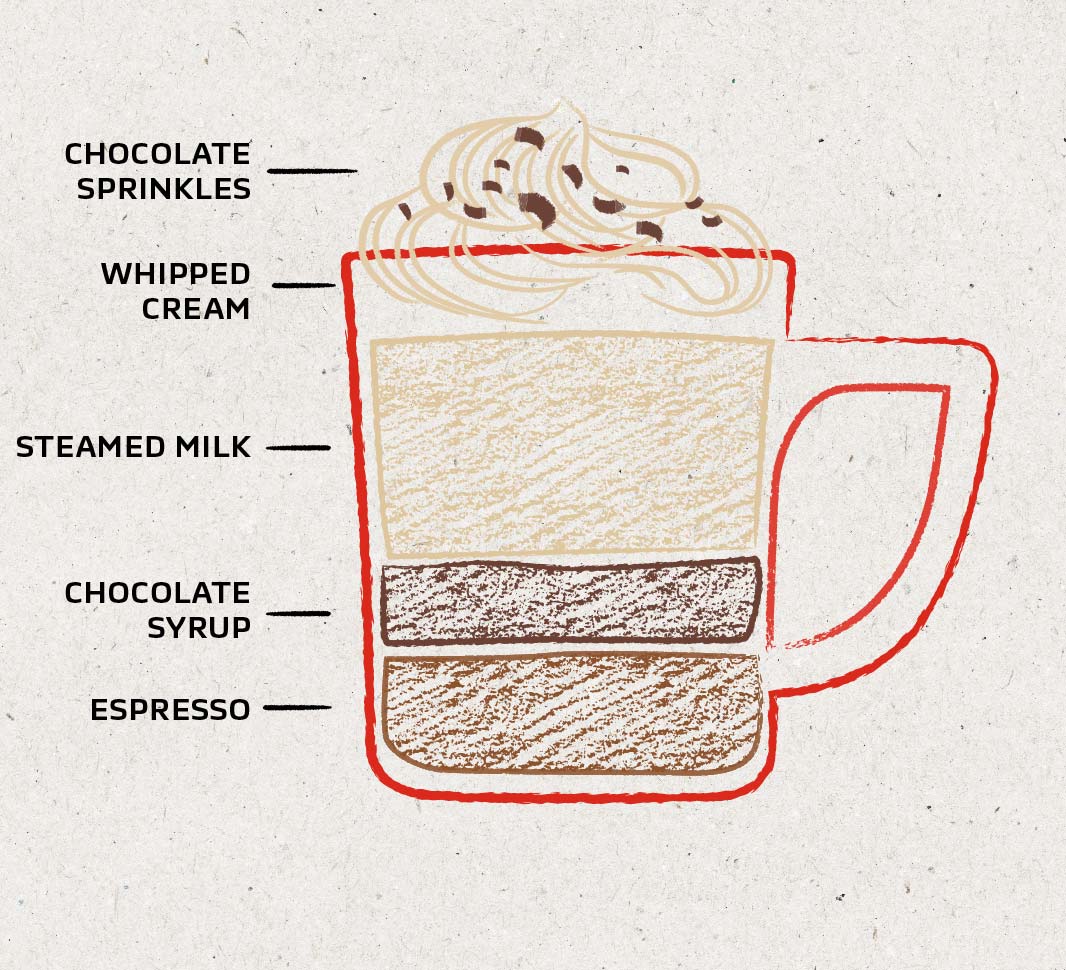
What does mocha mean?
Essentially, 'mocha' means a type of coffee that is made from a specific coffee bean originally only grown in Mocha, Yemen. It also means a mixture of coffee and chocolate, or a flavouring that tastes of this.
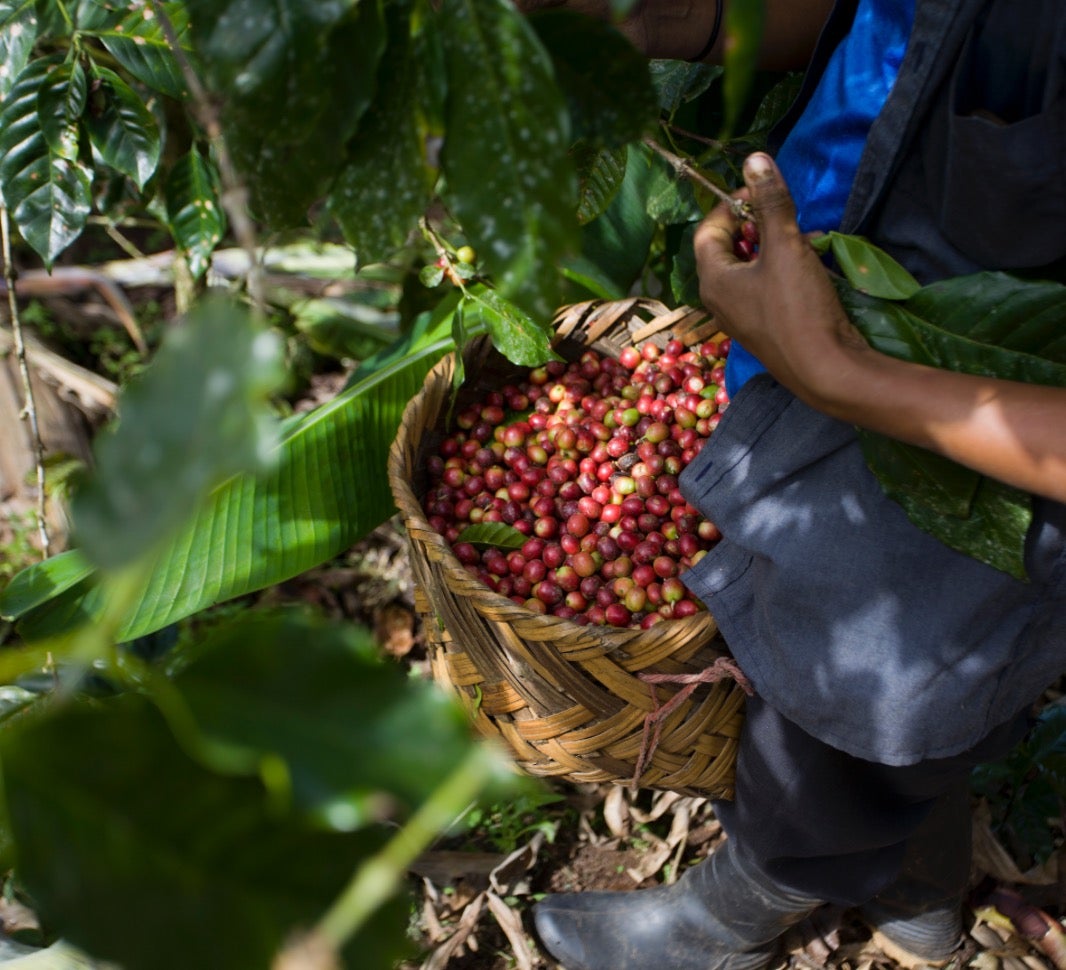
Mocha is known to taste like a chocolatey coffee. The espresso shot offers an almost bitter taste and the chocolate adds a sweetness to create a velvety smooth, luxurious combination.

What does a mocha taste like?
It is said that a mocha tastes like a chocolatey coffee. Whilst this is true, a mocha is so much more than that. Where the espresso shot offers an almost bitter taste, the chocolate combination adds a sweetness to create a velvety smooth, luxurious beverage.

Mocha origins
It is believed that the drink was originally named after the mocha bean, historically shipped from the port of Al Mokka in Yemen. Mocha beans were known for their naturally chocolatey flavour. These days, the name mocha doesn’t reference these coffee beans as such, but rather the presence of added chocolate flavourings in the coffee.

Cappuccino vs mocha – what’s the difference?
For starters, the cappuccino hails from Italy and the mocha originates in Yemen. They’re both espresso-based drinks, but the mocha contains chocolate flavouring and the cappuccino is topped with a milk foam to form a frothy coffee beverage – sometimes with a dusting of chocolate on top too.

Today’s community favourites
Discover some of the most enjoyed articles from across the site

3 morning rituals to make your day
Wake up early
Getting up early makes time for things that matter in your world like exercise, practicing mindfulness and of course, your morning coffee, before your day really begins.

Connect with loved ones to make their day
Good conversation is uplifting for the soul, but it’s something that many people skip in their morning routines. Why not ask your loved ones about what they’re looking forward to that day? Or about any dreams they had last night? If you live alone, you can still send a ‘Good Morning’ message to your loved ones to make their day!

Challenge yourself and set tasks that inspire you. This way, your day is bound to get off to a great start.

Plan your day to make a difference
More than ever, it’s important to look forward to your day and any exciting plans you may have. Besides what you have to get done, think about what you want to achieve. Challenge yourself and set tasks that inspire you. This way, your day is bound to get off to a great start.

Today’s community favourites
Discover some of the most enjoyed articles from across the site




